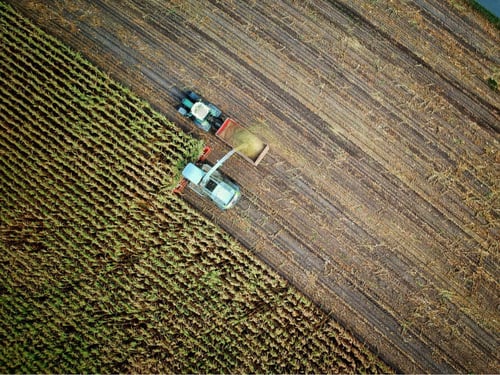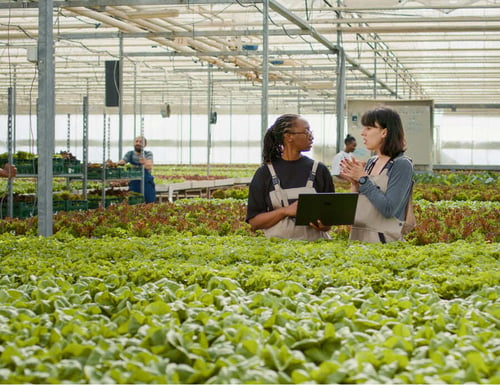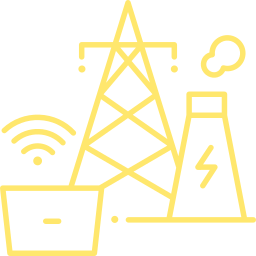R&D Tax Credits For The Agriculture Sector
Get the sector experience you need to make a successful R&D tax relief claim
QLC helps agriculture companies accelerate their R&D claims with our streamlined portal and expert team.


Our agriculture experience
With many years of experience helping agriculture companies take advantage of R&D tax incentives, QLC understands the unique challenges and opportunities in your industry. We've helped many agriculture businesses claim millions in R&D tax credits. Let QLC help you.
Find out more in our agriculture sector success stories below:
Success stories
What Our Clients Say About Us
"I am really impressed with the efficiency of your work, and the results you got for our company. A very friendly, committed and obviously hardworking team. You made the whole process very easy."
Will Tompkins (Director)
Vintage and Classic Cars
"QLC successfully claimed credits for the past 2 financial years, this year was even better. They managed the application and claimed the R&D credit prior to our annual tax bill, making the whole process quicker, easier and more efficient than last year."
Andrew Forbes (Director)
Architecture
"A massive thanks to all your team, obviously with the current situation, this money couldn’t have come at a better time."
Ian Cooke (Director)
Engineering
"From our experience we have always found QLC to be efficient and thorough in their tax appraisals, carefully guiding us through the often complex process. They have a very approachable team, all of which have been able to offer excellent advice when needed."
Ben Reed (Director)
Architecture
"They are proactive and efficient in performing their service and I have been impressed by their dynamism."
Chris Wright (Director)
Motorsport Engineering
"Your company did exactly what you said it would do. It took far less time than the other company that we had used in the past. We are extremely pleased with the outcome."
Adrian Smith (Company Sec)
Manufacturing Firm
"I am really impressed with the efficiency of your work, and the results you got for our company. A very friendly, committed and obviously hardworking team. You made the whole process very easy."
Will Tompkins (Director)
Vintage and Classic Cars
"QLC successfully claimed credits for the past 2 financial years, this year was even better. They managed the application and claimed the R&D credit prior to our annual tax bill, making the whole process quicker, easier and more efficient than last year."
Andrew Forbes (Director)
Architecture
"A massive thanks to all your team, obviously with the current situation, this money couldn’t have come at a better time."
Ian Cooke (Director)
Engineering
"From our experience we have always found QLC to be efficient and thorough in their tax appraisals, carefully guiding us through the often complex process. They have a very approachable team, all of which have been able to offer excellent advice when needed."
Ben Reed (Director)
Architecture
"They are proactive and efficient in performing their service and I have been impressed by their dynamism."
Chris Wright (Director)
Motorsport Engineering
"Your company did exactly what you said it would do. It took far less time than the other company that we had used in the past. We are extremely pleased with the outcome."
Adrian Smith (Company Sec)
Manufacturing Firm
How much could you claim?
The average R&D tax claim in the agriculture sector
For your own quick estimate, you can use our easy-to-use R&D tax calculator:
£ 42 k
Common R&D activities in the Agriculture sector

Crop development and soil health
New crop varieties
Developing crops with improved yield, resistance to pests, disease, or extreme weather conditions.Soil testing and management
Researching ways to enhance soil health, such as microbial soil treatments, natural fertilizers, or bioremediation techniques.
Precision agriculture and digital farming

Sensor and IoT integration
Developing or testing sensors and Internet of Things (IoT) devices to monitor soil moisture, crop health, weather conditions and other critical data points.Drones and satellite imaging
Using drones and satellite data to assess crop health, manage irrigation and monitor field conditions.Data analytics and AI
Creating software to analyze crop and soil data, enabling farmers to make data-driven decisions and reduce waste.

Water and irrigation innovations
Irrigation system improvements
Developing efficient irrigation methods, such as drip irrigation or automated sprinkler systems that optimize water use.
Water Recycling and Conservation
Researching ways to collect, purify and recycle water in farming operations.Sustainable farming practices

Alternative fertilizers and pest control
Developing organic or bio-based alternatives to traditional fertilizers and pesticides.Carbon capture and regenerative practices
Testing regenerative farming techniques, like cover cropping and reduced tillage, to improve carbon sequestration and soil health.

Livestock and animal health
Genetic improvement
Researching selective breeding methods to produce livestock that are healthier, more productive, or more resistant to disease.Feed optimization
Developing feed formulations to enhance animal health and growth, while minimizing environmental impact.Disease prevention and control
Researching vaccines, medications, or preventative treatments for livestock diseases
Automated and robotic equipment
Harvesting and planting robots
Developing or testing robotic equipment to automate planting, harvesting and other repetitive tasks.Weed control and crop maintenance
Using robots or drones equipped with AI to identify and remove weeds, reducing the need for herbicides.

Supply chain and storage solutions
Post-harvest handling
Researching improved storage techniques to prolong the freshness of produce and reduce food waste.Packaging innovations
Developing biodegradable or longer-lasting packaging to reduce environmental impact and maintain produce quality.
Energy efficiency and renewable energy

Renewable energy systems
Developing and testing solar, wind, or bioenergy systems specifically suited for agricultural use.
Energy-efficient equipment
Enhancing the energy efficiency of existing equipment or developing new machinery that reduces power consumption.
Controlled environment agriculture
Greenhouses and vertical farms
Innovating climate-controlled environments to optimize year-round crop growth and reduce dependence on external conditions.Hydroponic and aquaponic systems
Developing sustainable, water-efficient systems for growing plants in nutrient-rich solutions without soil
Why choose QLC?
QLC and our portal help businesses like yours claim R&D tax credits and tax relief faster and more successfully than ever.

End-to-end service

Easy-to-use customer portal

Faster payouts than our competitors

See your money in 16 days

Flexible comms

All sectors and sizes

No minimum fee

Stakeholder transparency
Agriculture Sector R&D Tax Credit FAQ
What types of agricultural activities qualify for R&D tax credits?
R&D in agriculture includes activities that aim to overcome scientific or technical challenges. Examples include developing new crop varieties, improving soil health, testing precision farming technologies, or creating sustainable farming practices. If you’re experimenting, modifying processes, or solving industry-specific problems, these activities may qualify.
Do I need to be doing something “new” or “groundbreaking” to qualify?
No, you don’t have to create a groundbreaking innovation. If you’re making improvements that require experimentation and problem-solving, even if the changes are incremental, they could qualify as R&D. The key factor is that the work seeks to resolve a technical uncertainty.
Can traditional farming activities qualify as R&D?
Yes, traditional activities can qualify if they involve experimentation or overcoming technical challenges. For example, if you’re improving pest control methods, testing new crop rotations, or experimenting with soil management techniques and it involves solving specific technical issues, it may count as R&D.
Can smaller farms or family-owned operations claim R&D tax credits?
Absolutely! R&D tax credits are not limited to large corporations. Many small farms and family-run operations have successfully claimed credits. If you’re addressing technical challenges on your farm, you likely have activities that qualify for R&D tax relief.
What costs are eligible for R&D tax credits in agriculture?
Eligible costs include employee wages (for time spent on R&D), consumables like seeds and fertilizers used during experimentation, software and utility costs related to R&D. Some overhead costs, subcontractor expenses and costs for equipment used directly in R&D may also be claimable.
Does experimenting with sustainable practices, such as organic farming or renewable energy, qualify as R&D?
Yes, sustainability-related activities often qualify if they involve technical challenges. For example, testing organic pest control, creating energy-efficient processes, or developing renewable energy systems on your farm could be eligible, as long as there’s a scientific or technical uncertainty.
Can I claim R&D tax credits if I collaborate with universities or research institutions?
Yes, collaborative R&D activities are eligible. If you’ve partnered with research institutions, keep records of your contributions and expenses. Costs related to subcontractors and external consultants may also qualify if they’re directly involved in the R&D.